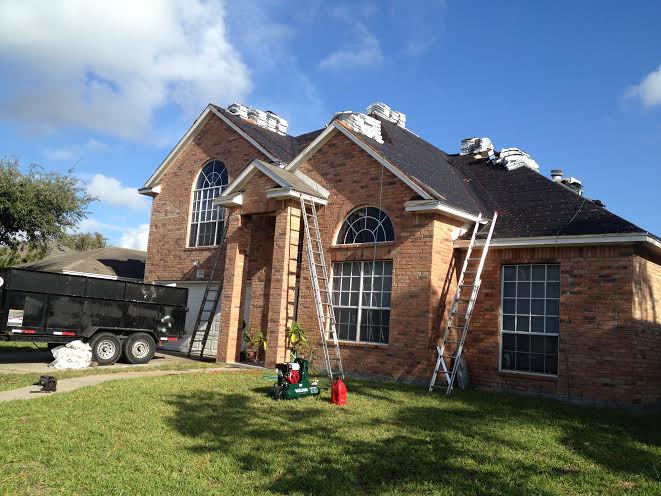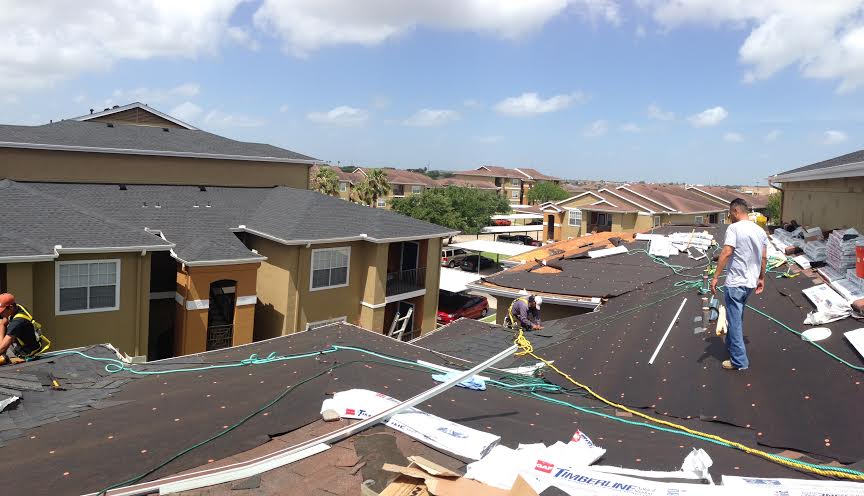Storms can cause significant damage to roofs, leading to costly repairs. Homeowners should be aware of the potential indicators that their roof has been damaged by a storm and how to spot them so they can address any issues as soon as possible.
This article provides useful tips for spotting storm damage on your roof in order to keep your home safe and secure.
Spotting storm damage on your roof requires close inspection and knowledge of what signs you should look out for. It is important to know where to look and when it is best to contact professionals who have the necessary tools and expertise needed for repair work.
With the right guidance, homeowners will be able to identify any potential problems with their roofs before they become serious or lead to further complications.
Visual Inspection
The first step in spotting storm damage on your roof is to conduct a visual inspection.
To begin, it is important to check for any debris that may have accumulated on the roof as a result of high winds and heavy rains associated with storms. Debris such as branches or other objects can cause significant damage if left unattended.
After checking for debris, you should inspect the wear of each shingle on the roof. High winds can cause shingles to lose granules which results in an exposed underlayment which can lead to increased chance of water intrusion into the home or building. Additionally, hail from severe thunderstorms can also create dents and cracks in shingles that need immediate attention before they worsen over time.
It is recommended that homeowners hire a professional who has experience detecting storm damage when inspecting their roofs. This individual will be able to more accurately assess the condition of your roof compared to someone without prior training or knowledge about roofs.
Inspecting Shingles And Flashing
The inspection of shingles and flashings is an important step in assessing the condition of your roof after a storm. It is essential to ensure that no damage has occurred, as any repairs may be costly if not attended to promptly.
Checking for wear or missing shingles should be done carefully, especially around valleys and penetrations such as chimneys and vents where water can easily collect. Additionally, it’s important to inspect the seals between different parts of the roof system to make sure they are tight and secure.
This includes checking ventilation systems like soffit vents, ridge caps, pipe collars, etc., which can all become damaged over time due to strong winds or heavy rains brought on by storms. If any signs of damage are found during this inspection process, repair work must be carried out quickly in order to prevent further deterioration from occurring.
Checking Gutters And Downspouts
Periodically inspecting your gutters and downspouts is an essential part of protecting against storm damage. Cleaning debris from the gutters, as well as checking that they are securely attached to the roofline, can help prevent water pooling on your roof or overflowing onto walkways and other surfaces below.
Clogged drains should also be cleared regularly; it’s a good idea to check them after heavy rainstorms for any signs of blockage.
It is important to inspect gutter systems after a storm event has occurred in order to quickly identify any potential problems before further damage takes place. If you spot any leaks, cracks or breaks in the system, contact a professional immediately for repairs – don’t wait until more severe weather hits again!
Taking proactive steps now can save time and money later on if more substantial repair work needs to be done. To ensure optimal protection for your home, make sure that regular maintenance is carried out on gutters and downspouts throughout each year.
Assessing Roof Vents And Chimneys
After checking the gutters and downspouts, it is important to assess roof vents and chimneys for storm damage. Proper ventilation of these areas is essential for a healthy roofing system. It will help to keep away moisture from your attic and other parts of your home that can lead to mold growth or wood rot.
When inspecting vents and chimneys, look for any cracks in the mortar joints, vent pipe connections and flashing seals around them. These need to be sealed properly with caulk or metal flashing tape so water does not get inside the structure.
Also check if there are broken shingles near the area that could cause further damage when exposed to heavy rains or winds.
If any issues have been found, they should be addressed immediately by a certified professional before more serious problems arise later on due to lack of proper maintenance. With careful vigilance and regular upkeep, homeowners can save themselves a lot of trouble down the road by spotting storm damage early on.
Identifying Signs Of Moisture Damage
The risks posed by severe weather can be alarming and overwhelming. To safeguard against storm damage, it is important to take stock of your home’s exterior before a storm strikes.
Inspecting the roof for signs and symptoms of potential damage is essential in preserving its integrity over time.
Start by checking the attic for any moisture buildup or water stains on the walls or ceiling that could indicate a leaky roof.
Next, analyze each segment of the rooflines carefully for any missing shingles or cracked tiles as these areas are particularly vulnerable during strong winds and heavy rains.
Finally, pay close attention to flashing around chimney openings where gaps often occur due to wear-and-tear from weather conditions.
Taking proactive steps prior to experiencing inclement weather will help protect your home from costly repairs down the line.
Investigating Roof Valleys
The next step in the process of spotting storm damage on your roof is to investigate roof valleys.
Roof valleys are areas where two parts of a roof join together and form an angle.
It is important that these areas be assessed for any signs of runoff or debris, as they can easily become blocked with water due to their angle shape.
When inspecting this area, it is essential to look out for any discoloration or deterioration which could affect the integrity of the roofing materials.
In addition, assessing runoff can provide further insight into potential issues regarding moisture build-up around the valley area.
If there appears to be evidence of leakage within the walls surrounding the valley, then further investigation may be needed to determine if repairs should be undertaken.
Furthermore, looking for any type of debris such as leaves, twigs, moss or other matter trapped in the valley itself can indicate whether drainage has been affected by blockages from wind damage or heavy rainfalls.
All these factors must be taken into consideration when investigating roof valleys for storm damage.
Consulting A Professional Roofer
The sight of storm damage on your roof can be a daunting one. To ensure that the necessary repairs are conducted in an efficient and effective manner, it is highly recommended to consult with a professional roofer before taking any action.
The hiring process should involve assessing their experience level, insurance coverage, and customer reviews to gain an understanding of the quality of service they offer. This helps create peace of mind regarding the quality of workmanship that will go into repairing or replacing damaged roofing materials.
Furthermore, asking for proof of valid insurance coverage from a potential contractor offers additional assurance that any unforeseen issues during repair or replacement processes may be covered financially by the contractor’s insurance policy. Verifying this information also reduces liability risk for homeowners who might otherwise have to pay out-of-pocket if uninsured contractors were hired for repair jobs.
Asking questions about how prospective contractors handle warranty claims and what types of warranties are offered can help provide further insight into the overall value being provided by each candidate. Taking these steps prior to making a decision ensures that all essential considerations have been taken into account when selecting a qualified and reputable roofer.
Conclusion
It is important to inspect a roof for storm damage in order to ensure its integrity and prevent further issues.
To do this, one should assess shingles and flashing, check gutters and downspouts, investigate roof valleys, and look for signs of moisture damage around vents and chimneys.
While it is possible to perform these inspection tasks on one’s own, consulting a professional roofer may be beneficial if any potential problems are identified.
A qualified contractor can provide an accurate assessment and recommend the best course of action for repairing any existing or future damages that might arise due to storms.


